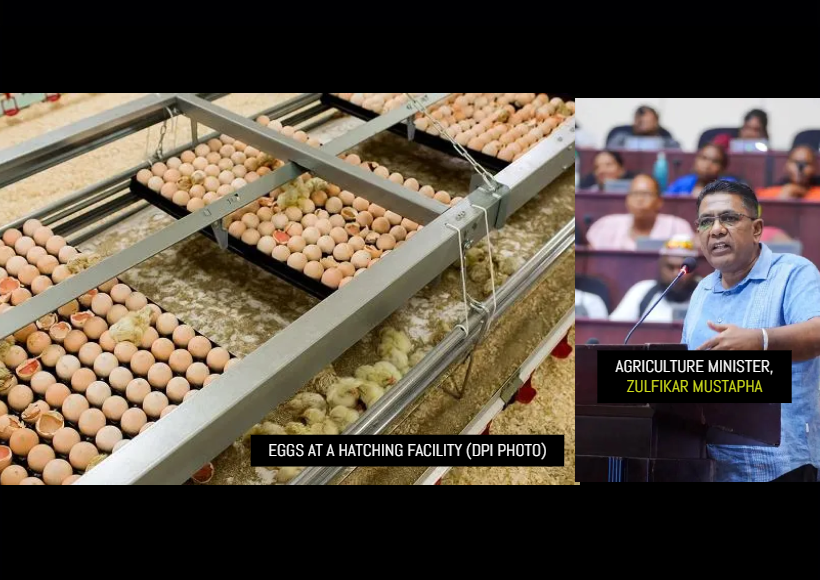Guyana is set to achieve self-sufficiency in hatching egg production by 2026. The announcement was made by Minister of Agriculture, Zulfikar Mustapha during the launch of a new high-yielding rice variety at Nooten Zuil, East Coast Demerara, on Monday.
Minister Mustapha revealed that the Ministry of Agriculture is implementing modern poultry production techniques, including the introduction of climate-smart tunnel houses. These advanced facilities regulate air temperature to optimal levels, significantly boosting the local production of hatching eggs. However, Guyana still relies heavily on imports to meet current demand.
“At present, we are importing nearly 53 million hatching eggs annually. Last year, we ventured into domestic production, starting with 27,000 eggs. For the first half of this year alone, we produced 94,000,” the minister explained.
To reach the ambitious target of full production, the Guyana Livestock Development Authority (GLDA) will collaborate closely with the private sector. This initiative aligns with a directive from President Dr. Mohamed Irfaan Ali, who recently allocated funds to support the project and ensure Guyana’s complete production of hatching eggs.
In addition to advancing the poultry industry, Minister Mustapha highlighted the government’s commitment to increasing dairy production. He noted that the Demerara Distillers Limited (DDL) has invested US $20 million in partnership with an Israeli company to expand the country’s dairy capabilities. This investment will enhance milk production and bolster exports, complementing the operations of the Amaya Milk Plant in Region Five.
Since returning to office in 2020, the PPP/C government has been working aggressively to reclaim Guyana’s position as a leader in global agriculture.
Key initiatives include the introduction of livestock such as black belly sheep, swine, and breeding bulls, as well as the expansion of prawn and honey production. These efforts are part of a broader strategy to reduce Guyana’s and CARICOM’s food import bills by 25% by 2025.













